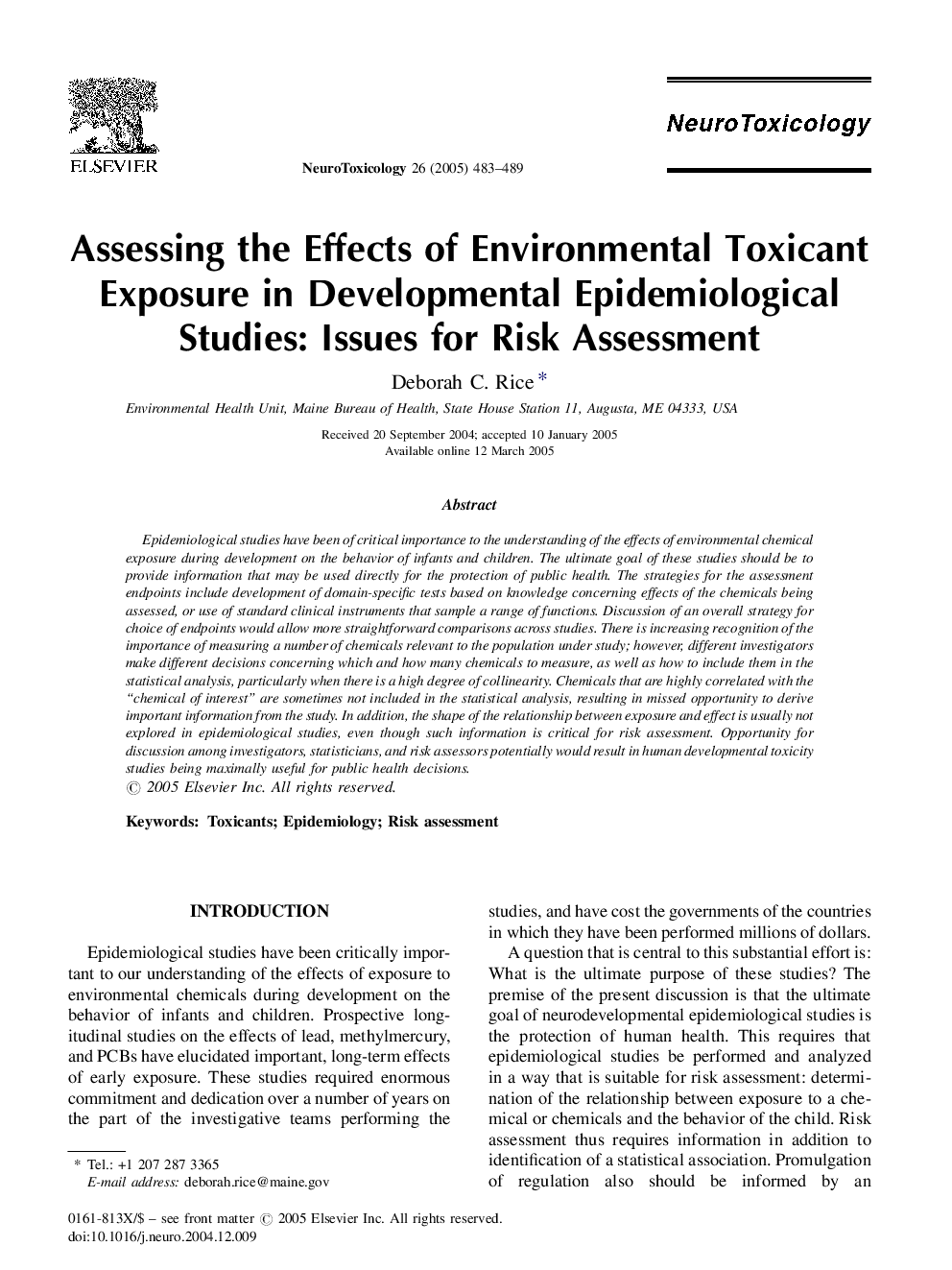| Article ID | Journal | Published Year | Pages | File Type |
|---|---|---|---|---|
| 9032144 | NeuroToxicology | 2005 | 7 Pages |
Abstract
Epidemiological studies have been of critical importance to the understanding of the effects of environmental chemical exposure during development on the behavior of infants and children. The ultimate goal of these studies should be to provide information that may be used directly for the protection of public health. The strategies for the assessment endpoints include development of domain-specific tests based on knowledge concerning effects of the chemicals being assessed, or use of standard clinical instruments that sample a range of functions. Discussion of an overall strategy for choice of endpoints would allow more straightforward comparisons across studies. There is increasing recognition of the importance of measuring a number of chemicals relevant to the population under study; however, different investigators make different decisions concerning which and how many chemicals to measure, as well as how to include them in the statistical analysis, particularly when there is a high degree of collinearity. Chemicals that are highly correlated with the “chemical of interest” are sometimes not included in the statistical analysis, resulting in missed opportunity to derive important information from the study. In addition, the shape of the relationship between exposure and effect is usually not explored in epidemiological studies, even though such information is critical for risk assessment. Opportunity for discussion among investigators, statisticians, and risk assessors potentially would result in human developmental toxicity studies being maximally useful for public health decisions.
Keywords
Related Topics
Life Sciences
Environmental Science
Health, Toxicology and Mutagenesis
Authors
Deborah C. Rice,
